
Scientific name: Carcharhinus longimanus
Size: From 6.6 to 10 foot, up to 13 foot
Color: Dirty white fur, olive
Distinguishing feature: Tapered shape. Dorsal and pectoral fins highly developed. Ends of fins white and rounded.
Where did we see it: Egypt
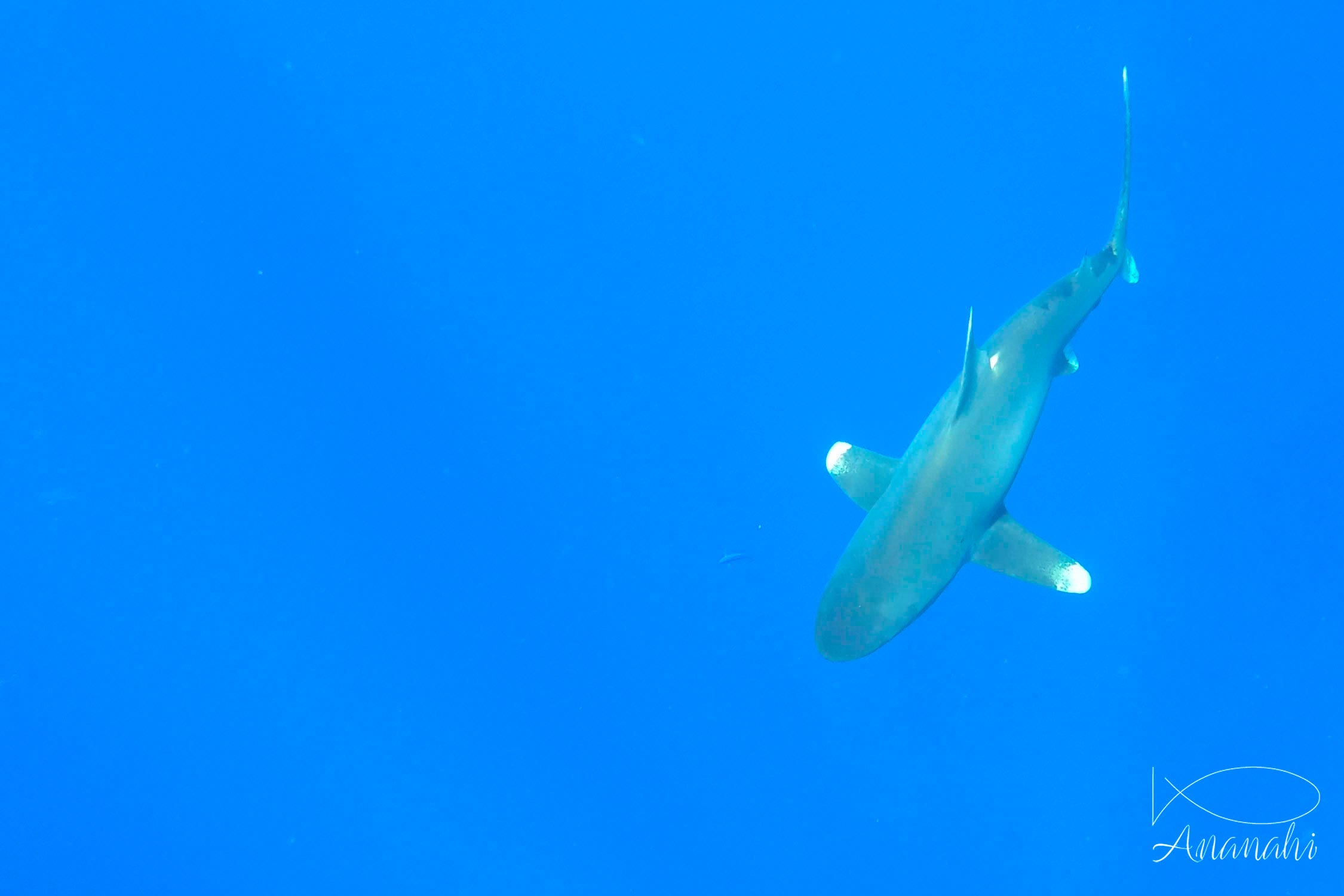
Scientific name: Carcharhinus longimanus
Size: From 6.6 to 10 foot, up to 13 foot
Color: Dirty white fur, olive
Distinguishing feature: Tapered shape. Dorsal and pectoral fins highly developed. Ends of fins white and rounded.
Where did we see it: Egypt
This shark is found in the blue in waters more than 20°C, often observed on the shallow or near diving cruises.
It's a solitary and opportunistic shark, the rarity of prey in the open seas forcing him to eat what he finds and it can be quite varied (tuna, barracudas, marlins, sharks, rays, mammals, etc.).
It can detect a prey a few kilometers further thanks to a very developed smell.
This shark is known for its inquisitiveness and stubbornness towards swimmers. Some facts show that he can repeatedly attack an individual who has annoyed him.
Oceanic whitetips sharks can be seen with pilot whales because they are very good to find squids this shark love.
It is one of the 3 most abundant oceanic sharks with silky shark and blue shark.
It can live from 16 to 22 years.
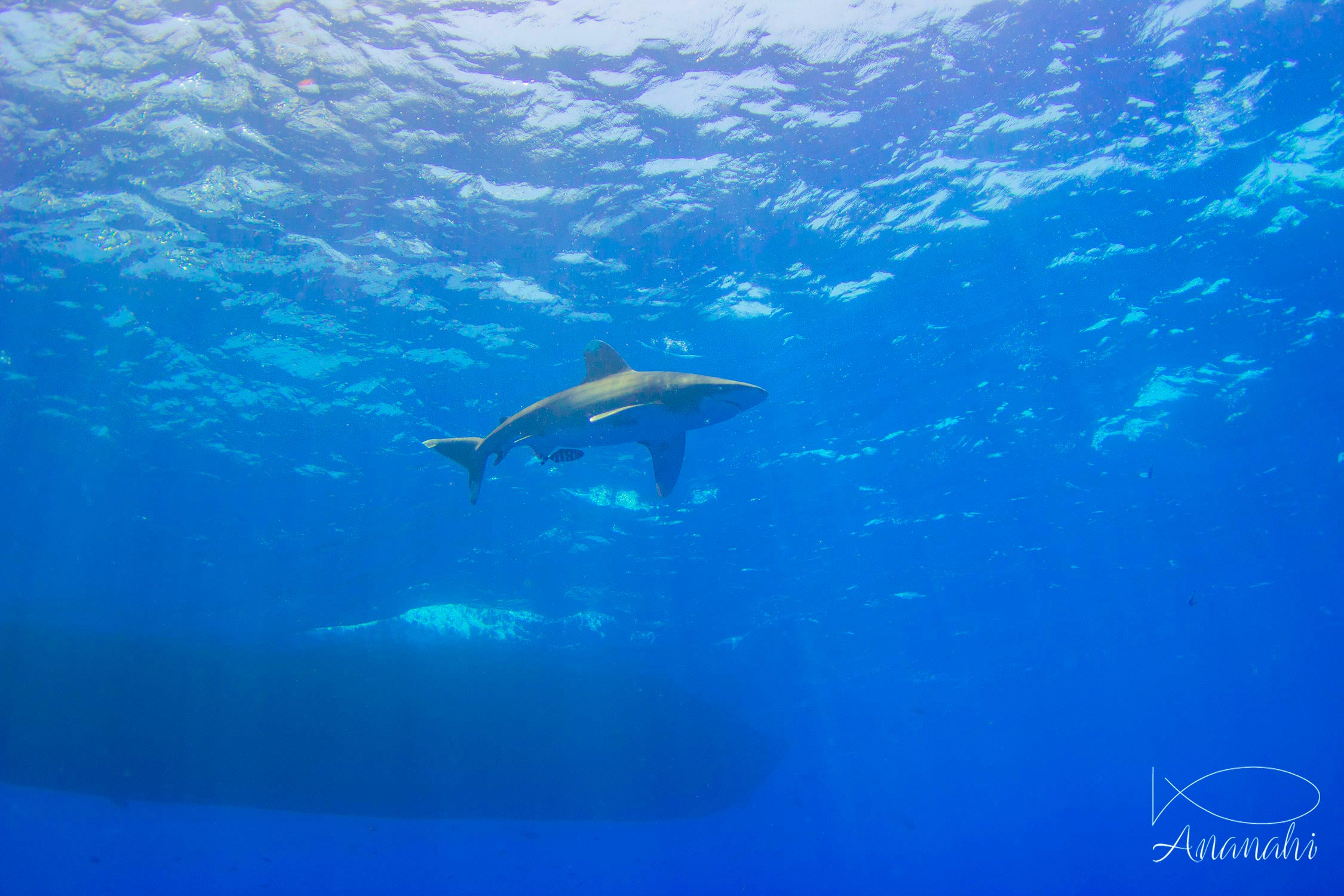

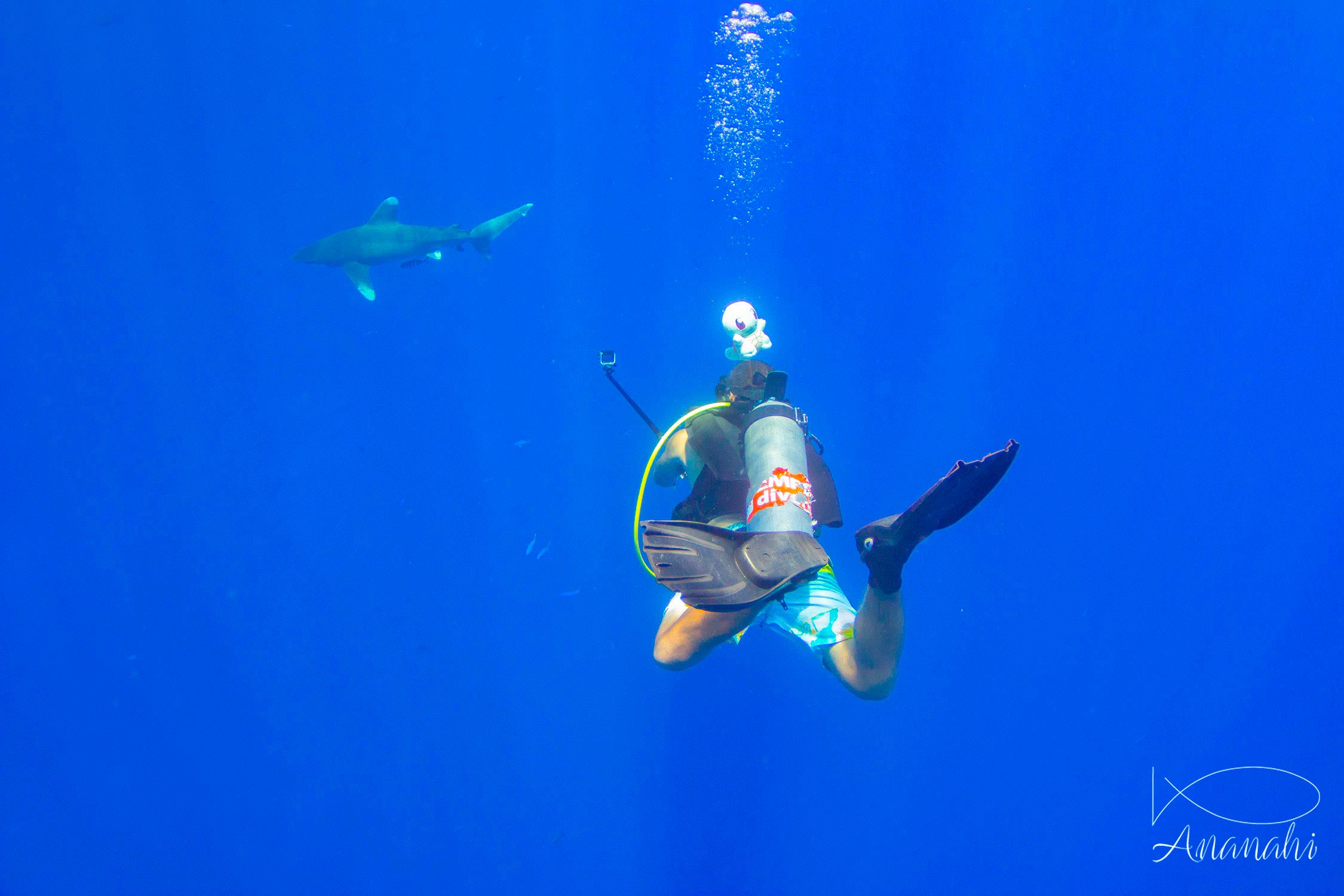
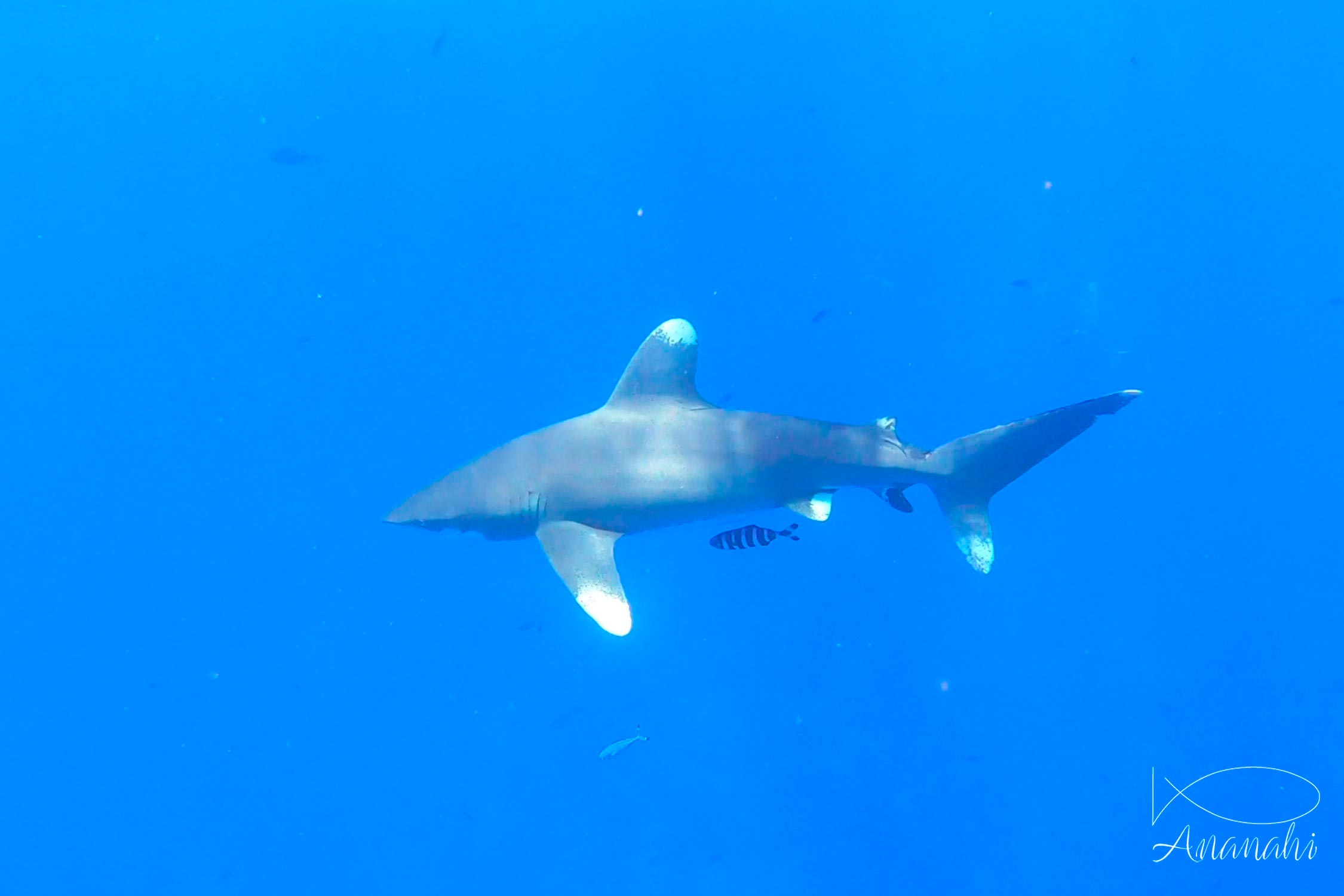

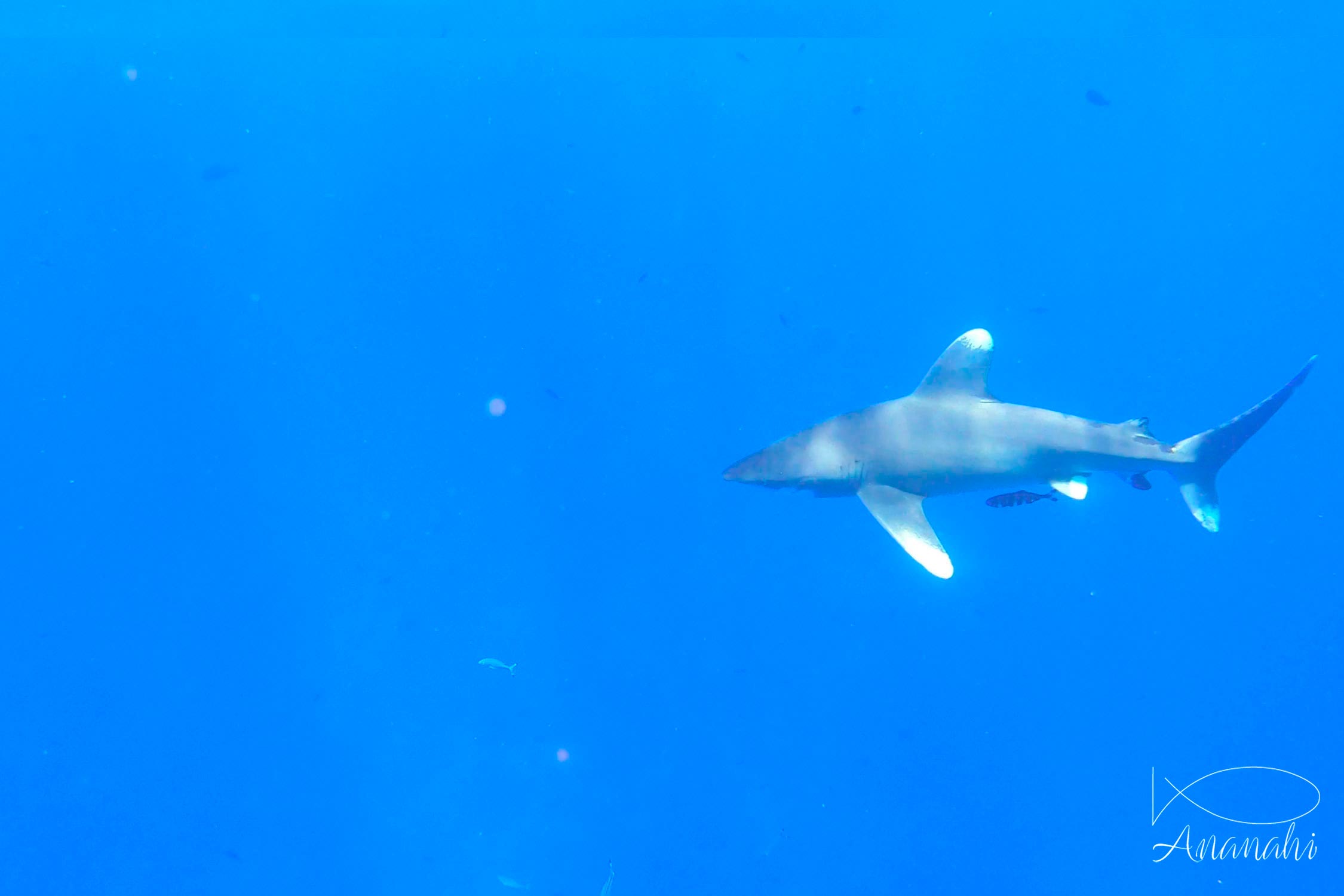
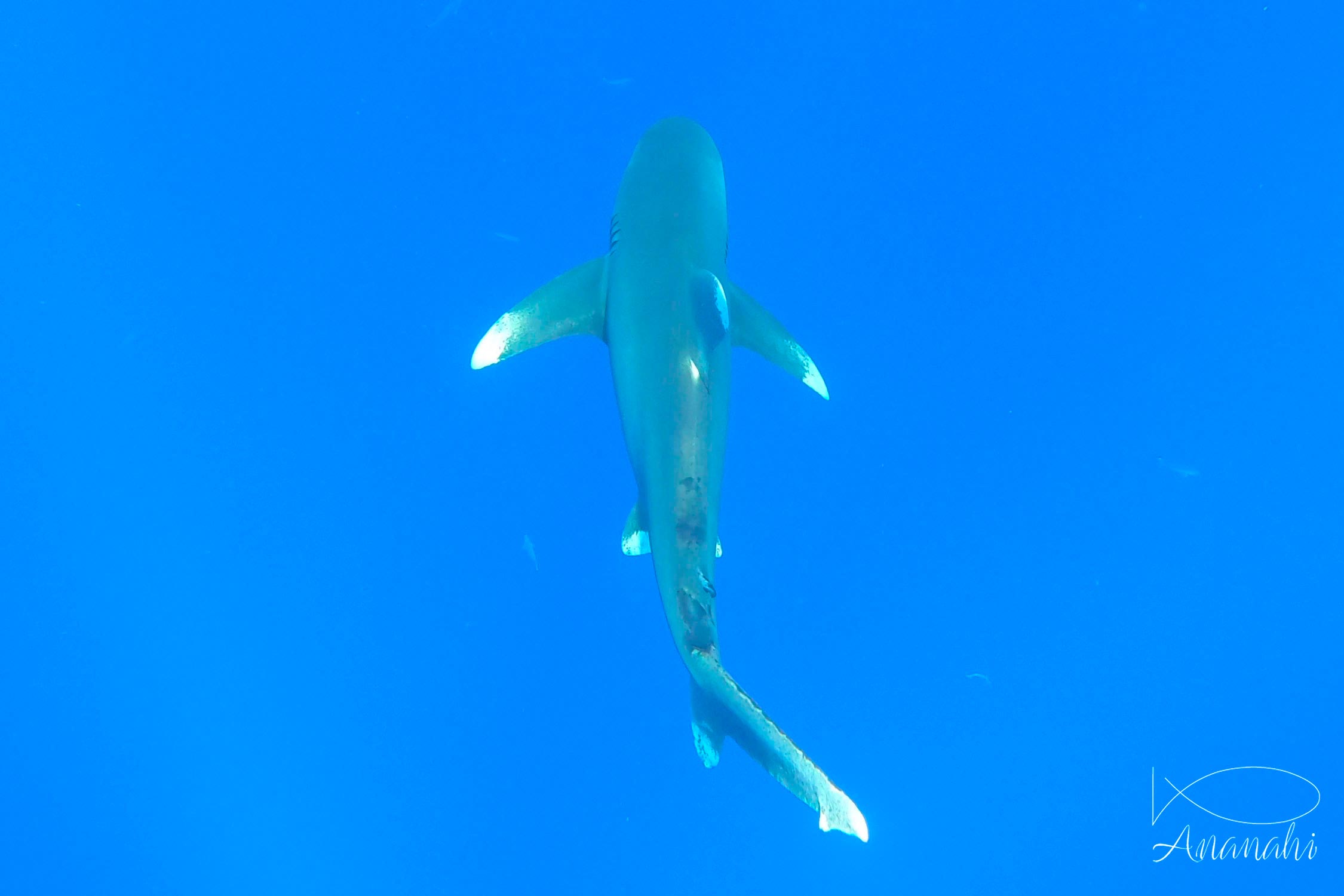

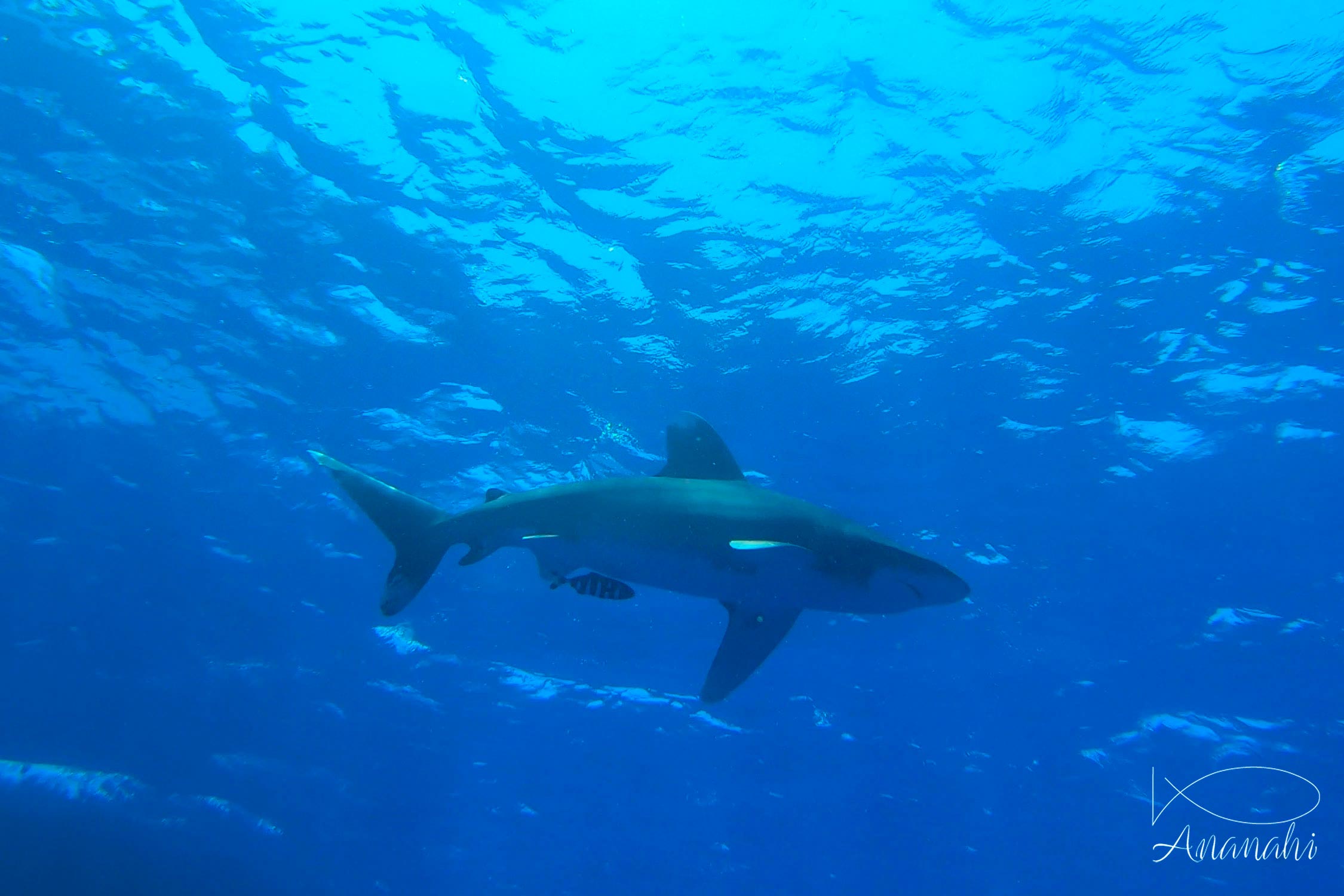
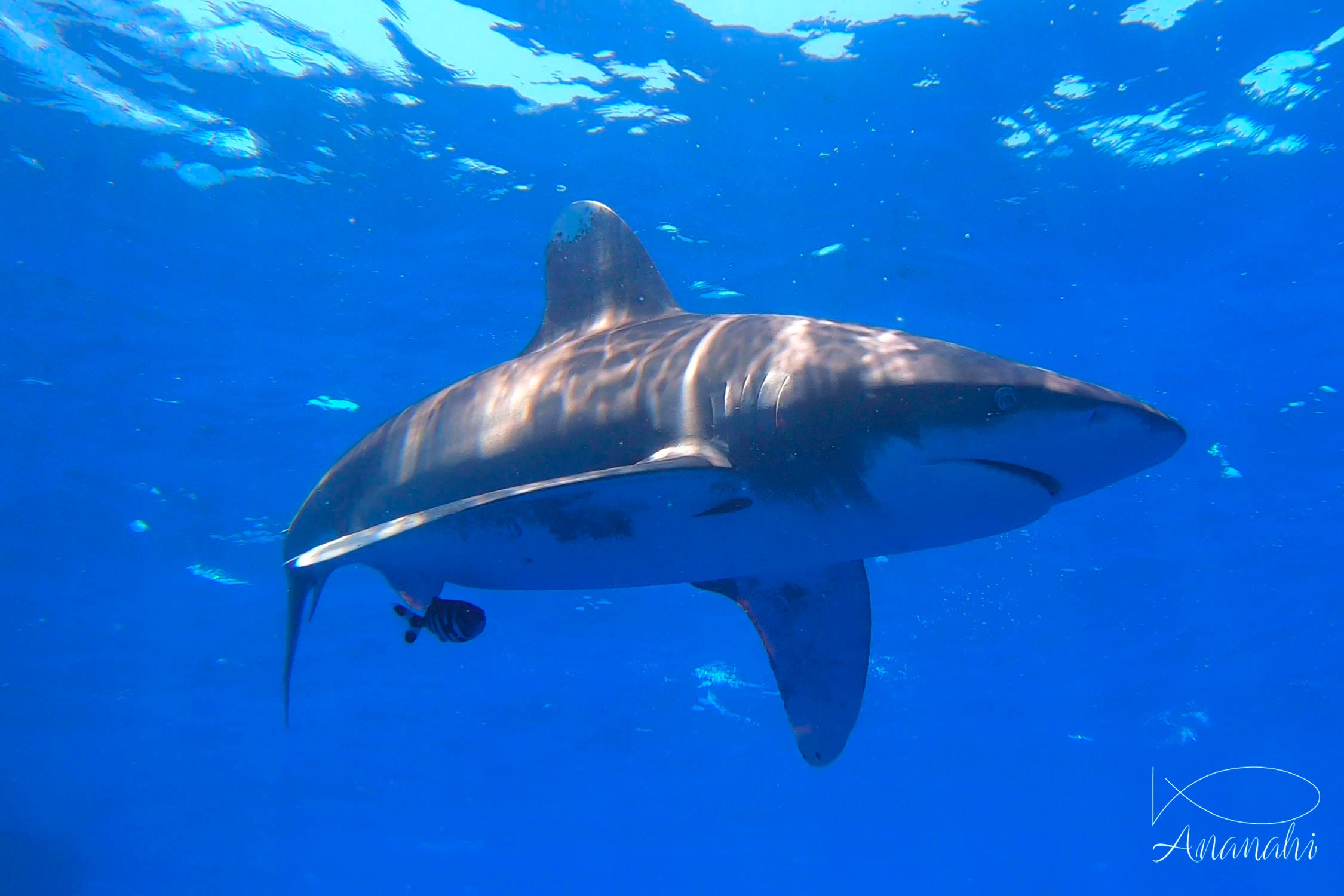
Parrotfish create a protective envelope around them when they are sleeping.
So, don't put the light on them during night dive to don't to wake them up and break this envelope.
Mammals have a horizontal tail.
Fishes have a vertical fin.
The kakihona sushi (sushi wrapped in persimmon leaves) are really the best!
To eat them, you have to go to Nara!